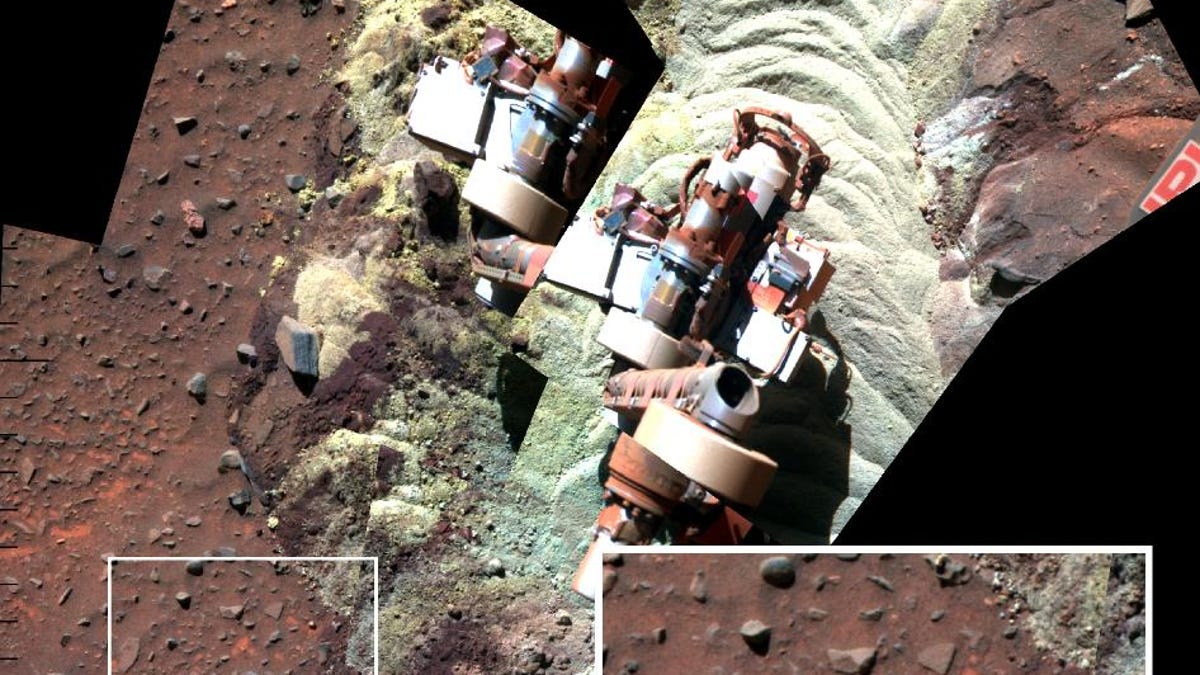Rover finds evidence of subsurface water on Mars
NASA says stratified soil in the area where its rover Spirit is now lodged indicates water has seeped into the ground, possibly in the form of snowmelt.
Who says the NASA Spirit doesn't live on?
Those who mourned the Mars rover's failure to communicate with its earthbound operators will be heartened to know data from the plucky explorer continues to produce important findings--even as the rover itself remains stuck in a sand trap and out of contact. In fact, NASA says that trap has turned out to be a jackpot, announcing today that Spirit has detected evidence of water under the ground's surface.
Layers of soil with different compositions in the area where the rover became stuck more than a year ago led the rover team to believe that frost or snow melted in the area fairly recently. They noticed that ferric sulfates found deep in the ground were not present in the topsoil; that other minerals, including what they believe to be hematite, silica, and gypsum, are close to the surface but are not found deeper down; and that none of these minerals appear in the sands on the surface.
The scientists posit that water has seeped into the ground, bringing more soluble minerals with it and leaving less soluble minerals closer to the surface. That snowmelt could be the result of cyclical climate changes that occur as Mars' tilt on its axis changes, and that process could be ongoing, according to the report's lead author.
"The lack of exposures at the surface indicates the preferential dissolution of ferric sulfates must be a relatively recent and ongoing process since wind has been systematically stripping soil and altering landscapes in the region Spirit has been examining," said Ray Arvidson, of Washington University in St. Louis and principal investigator for the rover project.
The findings released today are based on data collected from late 2007 until the rover fell out of contact in March this year. Analysis has been published by Arvidson and dozens of others in the Journal of Geophysical Research.
Spirit became stuck in April 2009 when one of its wheels broke through the crusty surface and became lodged in the sand below. After almost a year of attempts to free the rover, NASA scientists in January decided instead to have it conduct experiments where it stood. However, they were unable to position the vehicle so its solar panels could recharge it before the Martian winter began, and the rover eventually lost communication with its operators in March. NASA will eagerly listen to find out whether Spirit reawakens when spring arrives next month.
See also an in-depth look ahead at the next Mars rover:
• On Mars, satisfaction awaits Curiosity rover
• How the Curiosity rover will land on Mars
• The Mars science gear on Curiosity


